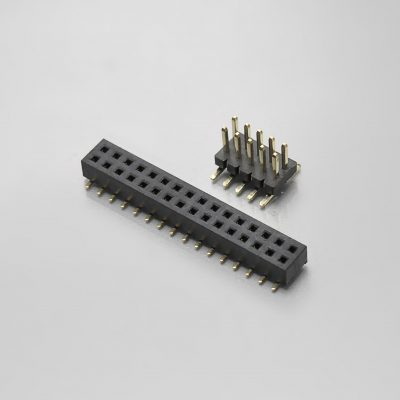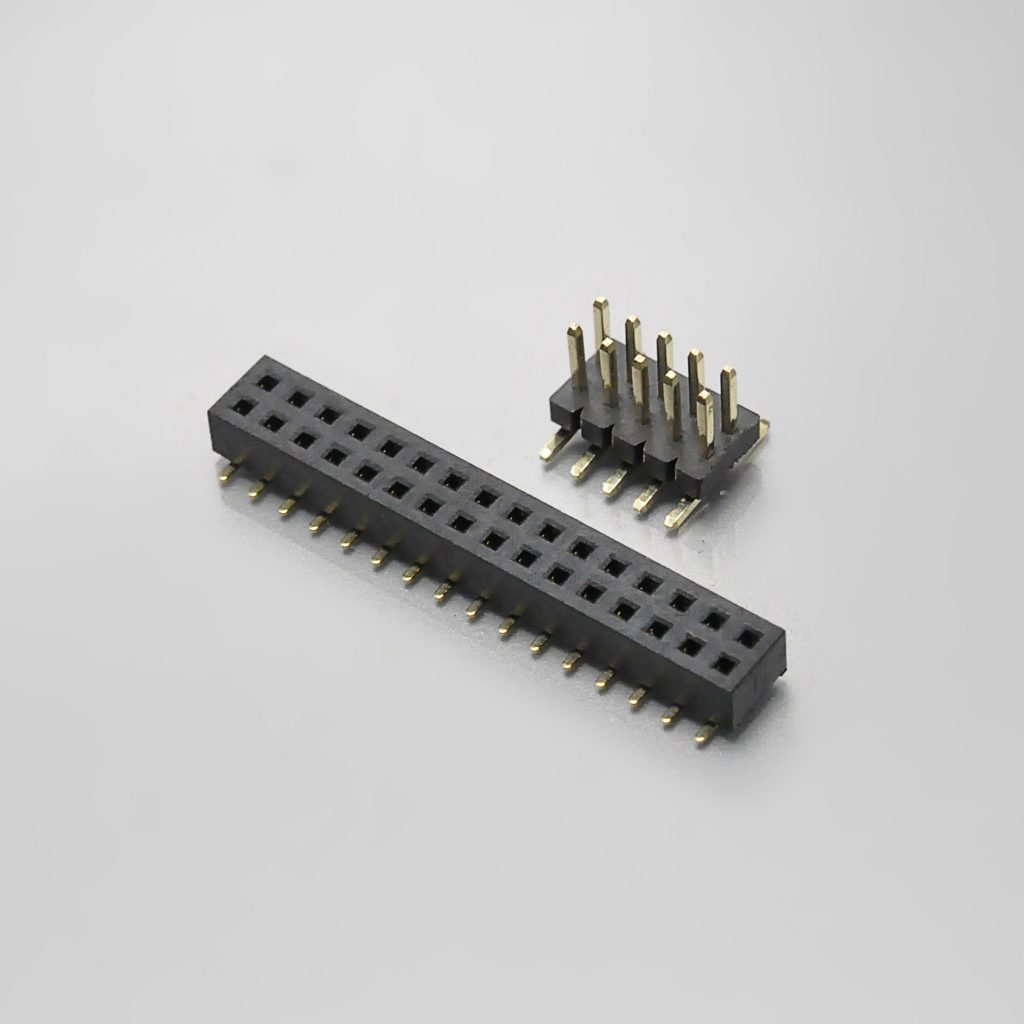At Konnra, we understand that navigating the complexities of industrial automation requires reliable, high-quality components that perform under the most demanding conditions. With over 20 years of experience, Konnra has established itself as a leading connector manufacturer, committed to providing comprehensive solutions that integrate design, R&D, production, and sales. In this article, we will explore the critical roles that male connectors and female connectors play in industrial automation. We will delve into their fundamental concepts, importance, key application scenarios, and design standards, demonstrating how Konnra’s expertise can support your automation needs with innovative and dependable solutions.

Basic Concepts and Functions
Male connectors (plugs) and female connectors (sockets) are fundamental components in various electrical systems, serving as the primary interface for electrical connectivity. These connectors are designed to ensure a secure and stable connection, which is crucial for the effective transmission of electrical signals and power.
1.Male Connectors
A male connector typically has protruding pins or prongs that fit into the corresponding female connector. The design of the male connector is such that it can be easily inserted into the female connector, ensuring a firm and stable connection. These connectors come in various shapes and sizes, depending on their specific applications. For instance, some may have cylindrical pins, while others might feature flat blades. The material used for the pins is usually a conductive metal such as copper or brass, often plated with another material like gold or nickel to enhance conductivity and prevent corrosion.
2.Female Connectors
Female connectors, on the other hand, have matching receptacles or sockets that receive the pins or prongs of the male connector. The receptacles are designed to grip the pins tightly, ensuring a solid connection that resists loosening due to vibrations or other external forces. The interiors of the receptacles are often lined with conductive materials to ensure efficient transmission of electrical signals and power. Additionally, the outer housing of female connectors is typically made from durable, insulating materials to protect the internal connections and prevent short circuits.
3.The Mating System
The mating system of male and female connectors is engineered to be intuitive and reliable. When a male connector is plugged into a female connector, the pins align perfectly with the receptacles, ensuring a secure fit. This precise alignment is critical in preventing misconnection, which can lead to electrical faults or system failures. The connectors are often designed with locking mechanisms or latches to further secure the connection, preventing accidental disconnections in environments subject to movement or vibration.
Importance of Male and Female Connectors in Industrial Automation
In industrial automation, the need for precise and dependable connections is amplified. Here are some reasons why male and female connectors are indispensable in this field:
1. Reliability and Durability:
Industrial environments are often harsh, with extreme temperatures, vibrations, and exposure to chemicals. High-quality connectors designed by reputable connector manufacturers ensure durability and long-term reliability.
2. Signal Integrity:
Maintaining signal integrity is critical in automation systems to prevent data loss and ensure accurate communication between components. Male and female connectors are engineered to minimize electrical interference and signal degradation.
3. Safety:
Properly designed connectors prevent accidental disconnections and ensure that electrical connections are safe and secure. This is crucial in preventing accidents and equipment damage.
4. Ease of Maintenance:
Connectors that are easy to connect and disconnect simplify maintenance and reduce downtime. Quick and secure connections allow for efficient troubleshooting and repairs.
5. Flexibility:
With the diverse range of equipment and systems in industrial automation, connectors offer flexibility in design and configuration, accommodating various requirements and enabling modular setups.
Key Application Scenarios
Male and female connectors find extensive applications across different sectors of industrial automation. Some key scenarios include:
1. Sensor and Actuator Connections
In automated systems, sensors gather data from the environment and send it to controllers, while actuators perform actions based on the controller’s instructions. Reliable connectors are essential for linking sensors and actuators to the control systems, ensuring accurate data transmission and prompt response.
For instance, in a manufacturing plant, sensors may monitor temperature, pressure, or position, while actuators control robotic arms or conveyor belts. High-quality male and female connectors ensure that these devices function seamlessly, maintaining the efficiency and precision of the automation process.
2. Power Distribution
Industrial machinery often requires robust power connections to operate efficiently. Male and female connectors are used to distribute power from main supplies to various machines and equipment. These connectors must handle high currents and voltages while ensuring safe and stable connections.
In applications such as assembly lines or automated warehouses, power connectors facilitate the reliable operation of multiple machines, ensuring continuous production and minimal downtime.
3. Control Systems
Control systems are the brain of industrial automation, coordinating and managing the functions of various components. Connectors are used to interface control units with other system parts, such as sensors, actuators, and communication networks.
For example, in an automated packaging system, connectors link the central control unit with sensors that detect package sizes and actuators that adjust packaging machinery accordingly. This integration ensures synchronized and efficient operations.
4. Data Communication
Modern industrial automation relies heavily on data communication for monitoring, control, and optimization. Male and female connectors are used to establish data networks, connecting programmable logic controllers (PLCs), human-machine interfaces (HMIs), and other communication devices.
In a smart factory, for instance, connectors facilitate data exchange between machines and centralized control systems, enabling real-time monitoring, predictive maintenance, and process optimization.
Design and Standards
The design and standardization of male and female connectors are crucial for ensuring their performance and compatibility in industrial automation. Several factors influence the design and selection of connectors:
1. Mechanical Design
The mechanical design of connectors involves considerations such as size, shape, and locking mechanisms. Connectors must be easy to connect and disconnect while providing a secure fit to prevent accidental disconnections. Rugged designs are preferred for industrial applications to withstand mechanical stresses and environmental factors.
2. Electrical Specifications
Electrical specifications include current and voltage ratings, contact resistance, and insulation resistance. Connectors must be capable of handling the required electrical loads without overheating or causing signal loss. High-quality materials and precise engineering are essential to meet these specifications.
3. Environmental Resistance
Industrial environments can be harsh, with exposure to dust, moisture, chemicals, and temperature extremes. Connectors must be designed to resist these conditions, with features such as sealing gaskets, corrosion-resistant materials, and IP (Ingress Protection) ratings indicating the level of protection against environmental factors.
4. Standards and Certifications
Adherence to industry standards and certifications ensures the reliability and safety of connectors. Common standards include those set by organizations such as the International Electrotechnical Commission (IEC), Underwriters Laboratories (UL), and the Institute of Electrical and Electronics Engineers (IEEE).
Standards cover aspects such as mechanical dimensions, electrical performance, and environmental resistance. Connector manufacturers like Konnra ensure that their products comply with relevant standards, providing customers with reliable and certified solutions.
Conclusion
In conclusion, male and female connectors are vital components in the realm of industrial automation, providing reliable and efficient connectivity solutions. As a leading connector manufacturer, Konnra is dedicated to offering high-quality connectors that meet the stringent demands of industrial applications. Understanding the basic concepts, importance, key application scenarios, and design standards of these connectors is crucial for optimizing the performance and reliability of automated systems.
One of our top recommendations is the KR1271 Series Pin Header Male Female Connector. This series is specifically designed to provide robust and dependable connections in industrial environments. The KR1271 Series offers exceptional durability, resistance to environmental stressors, and high electrical performance, making it an ideal choice for a wide range of automation applications.










